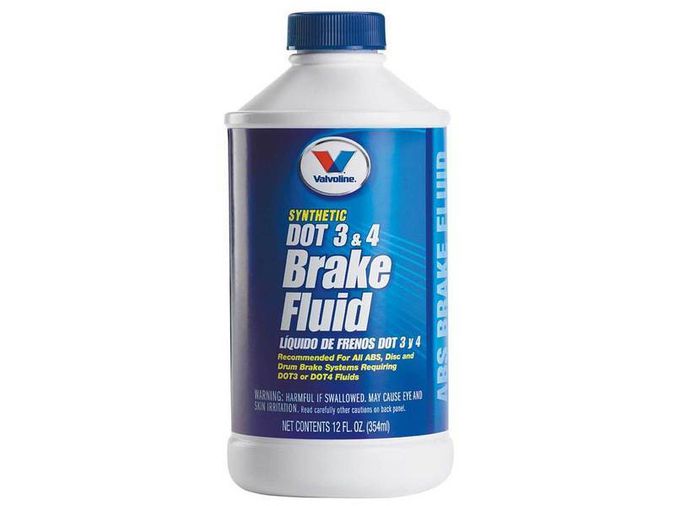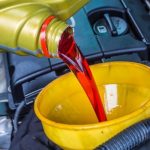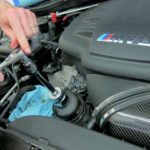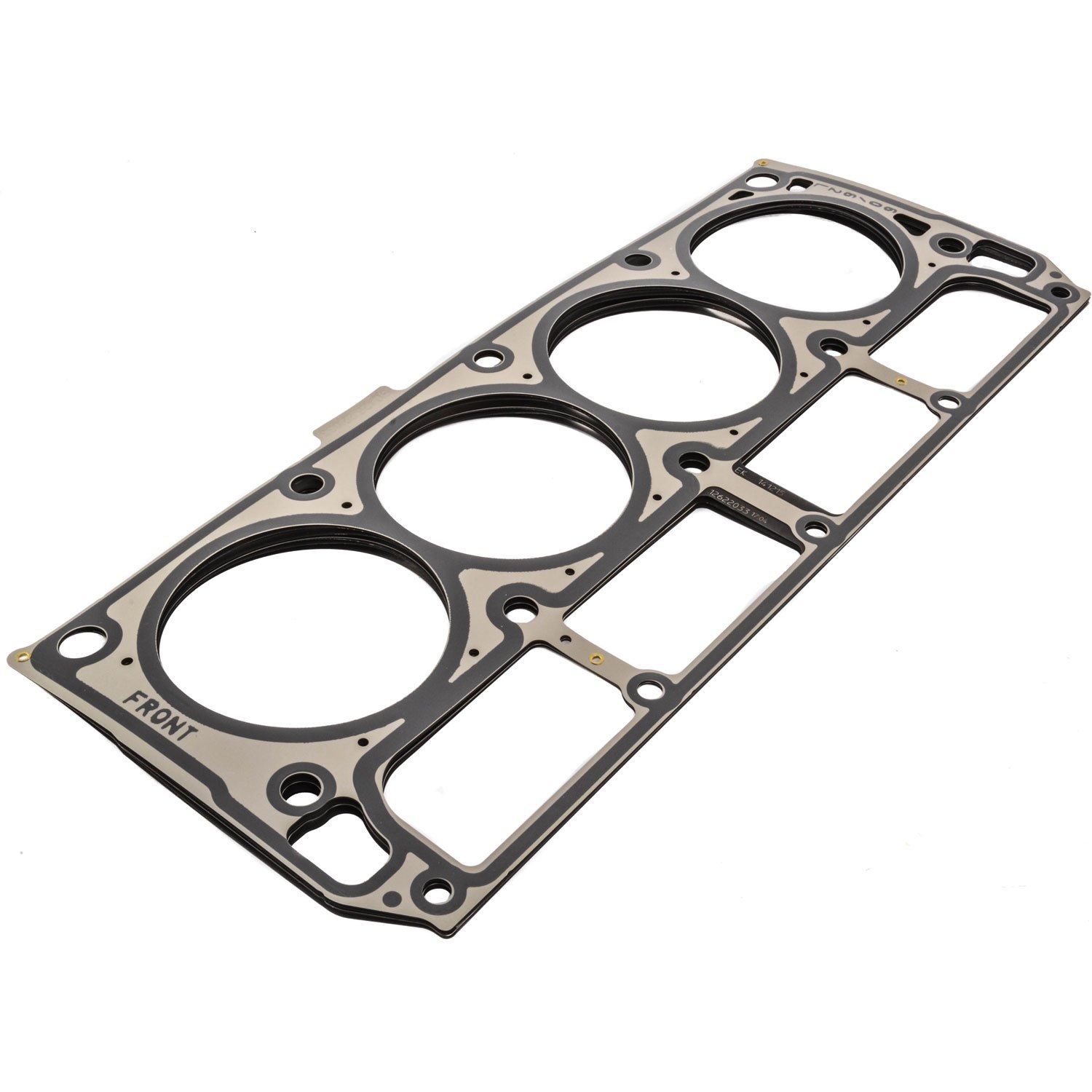If you are planning to change your brake fluid, you might want to know brake fluid change cost, in other words how much it cost to change your brake fluid. We are going to address this in this article plus every other important information you need to know about brake fluid. To get started, let’s briefly consider what a brake fluid is and what it does in an automobile.
What Is a Brake Fluid?
In automobiles, motorcycles, light trucks, and some bicycles, brake fluid is a type of hydraulic fluid used in hydraulic brake and clutch applications. It’s utilized to convert force into pressure and to boost braking power. Because liquids aren’t very compressible, this method works. Mineral oil (Citroen/Rolls-Royce liquide hydraulique minéral (LHM)) and silicone-based (DOT 5) brake fluids are also available.
The Federal Motor Vehicle Safety Standards (FMVSS) in the United States specify grades DOT 3, DOT 4, DOT 5, and DOT 5.1 under FMVSS Standard No. 116, where DOT refers to the US Department of Transportation. In other nations, these are commonly utilized.
Their categories are based on the SAE requirements, although with certain local differences — for example, the normal temperature and humidity ranges in Alaska and the Azores are different. DOT 3 is the same as SAE J1703 and ISO class 3, DOT 4 is the same as SAE J1704 and ISO class 4, and so on.
Except for DOT 5 silicone, which must be purple, all permitted fluids must be colorless or amber to be appropriate for street use in the United States.
Dot4
While a car that uses DOT 3 may also use DOT 4 or 5.1 (a temperature upgrade) if the elastomers in the system accept the borate compounds that raise the boiling point, a vehicle that requires DOT 4 may boil the brake fluid if DOT 3 is used (a temperature downgrade). Furthermore, these polyglycol-ether-based fluids cannot be combined with silicone-based DOT 5.0. Most cars built in the United States utilize DOT 4 brake fluid as of 2006.
Dot5
The silicone-based DOT 5 fluid is distinct from the DOT 2, 3, 4, and 5.1 fluids. It’s incompatible with water and other braking fluids, so don’t mix them. Only a comprehensive system switch, such as a total restoration, allows systems to change fluid.
A diorgano polysiloxane accounts for at least 70% of its weight. DOT 5 is hydrophobic, in contrast to polyethylene glycol-based fluids. Silicone has a more consistent viscosity index across a larger temperature range than other types of brake fluid, which is an advantage. It also has the advantage of not causing paint damage.
Anti-lock braking systems and DOT 5 brake fluid are incompatible. When the anti-lock brake system is turned on, DOT 5 fluid can aerate. Because DOT 5 brake fluid absorbs a little amount of air, bleeding the system of air requires caution.
Dot5.1
Due to the lack of adoption of silicone-based fluids, DOT 5.1 was developed, a fluid that provides the performance benefits of silicone while remaining familiar and compatible with glycol ether fluids. FMVSS 116 defines DOT 5.1 as a variant of DOT 5 that is less than 70% silicone. It’s DOT 5 if it’s over that threshold.
Read also: Dot3 vs Dot4 Brake Fluid: Which Is Better?
What Is Brake Fluid Change Cost?
A brake fluid change can cost anywhere from $80-$120 in most cases. Regardless of the make or model of car, the price is generally the same. The cost of brake fluid is low. The cost of labor accounts for the majority of the total. So, if you know what you’re doing and are a do-it-yourselfer, you’re in luck. On Amazon, you may purchase a brake fluid flush kit. You can also learn how to cleanse your brake fluid by watching a video on YouTube.
Best Brake Fluids You Should Use
The following are the brake fluids we recommend for your automobile. You can purchase it on amazon at a cheap price through the links provided here:
Bosch ESI6 brake fluid is compatible with vehicles that use DOT 3, DOT 4, or DOT 5.1 brake fluid. Most brake fluids are only good for one of the DOT grades, however Bosch’s fluid is good for the wide majority of modern automobiles. Most drivers will find that the versatility to use this fluid in a variety of cars with varying DOT grade requirements makes it an excellent choice.
The word “ESI” refers for “extended service interval,” which is the fluid’s next major benefit. This Bosch fluid is 100 percent longer lasting than standard DOT 3 fluid. It outlasts regular DOT 4 fluids by 50% and standard DOT 5.1 fluids by 10%. It’s also reasonably priced for brake fluid that isn’t designed for great performance.
The dry boiling point of Bosch ESI6 brake fluid is 518°F, while the wet boiling point is 365°F, exceeding DOT 5.1 regulations by 18°F dry and nine°F wet. Naturally, the Bosch fluid outperforms DOT 3 and DOT 4 fluids while new and in use. There is some improvement over regular DOT 5.1 fluids as well, but it isn’t as significant.
Finally, the Bosch ESI6 brake fluid has a three-year suggested change interval, compared to two years for most other brake fluids.
Prestone Synthetic Brake Fluid
Prestone Synthetic brake fluid is available for vehicles that require DOT 3 or DOT 4 brake fluid and is one of the most cost-effective brake fluids on the market. While you must purchase the appropriate grade for your vehicle, the availability of DOT 3 and DOT 4 versions of this Prestone brake fluid makes it a fantastic choice for many drivers.
Prestone Synthetic DOT 3 brake fluid has a dry boiling temperature of 460 degrees Fahrenheit (new, fresh fluid) and a wet boiling point of 284 degrees Fahrenheit (used, with water content). When new, this Prestone fluid provides a reasonable performance advantage over conventional fluids, but as it ages, it performs at the needed level.
Prestone fluid has a wet boiling point of 311 degrees and a dry boiling point of 510 degrees in the DOT 4 version. The Prestone product, like the DOT 3, has a dry boiling point of 446 degrees and a wet boiling point of 311 degrees when new, but it loses a lot of its heat-handling ability as it matures.
Motul RBF 600 Synthetic Racing Brake Fluid
DOT 4 is the designation on Motul RBF 600 synthetic racing brake fluid, but it will also operate in DOT 3 vehicles. While it will operate in most daily drivers, it is built to withstand the abuse of road racing and can withstand tremendous heat loads. It is also packed with nitrogen during packaging, which extends the shelf life by preventing contamination.
The dry boiling point of Motul RBF 600 synthetic racing brake fluid is 594°F, and the wet boiling point is 399°F. That’s a major improvement over regular DOT 3 fluids, which have a dry boiling point of 401 and a wet boiling point of 284, but it’s also a big improvement over conventional DOT 4 fluids, which have dry boiling points of 446 and wet boiling points of 311. Again, “dry” refers to brake fluid that is still in the container, but “wet” refers to brake fluid that has been utilized and has absorbed moisture from the environment.
The Motul RBF 600 is also the best illustration of brake fluid performance over time. When it transitions from dry to wet, it loses roughly 200 degrees worth of heat tolerance. When brake fluid has a water-by-volume percentage of 3.7 percent, it is technically “wet,” and with that small amount of moisture, this high-performance brake fluid on our list loses about a third of its performance, but inferior fluids lose more.
Castrol SRF Synthetic Racing Brake Fluid
Another high-performance choice on our list, but also one of the most expensive, is Castrol SRF synthetic racing brake fluid. This fluid is designed to replace DOT 3 and DOT 4 brake fluids, but it provides boiling protection considerably beyond what regular DOT 3, DOT 4, and DOT 5.1 brake fluids provide.
This fluid is designed for high-performance use, providing greater protection in the most demanding kinds of racing, but it will also operate in your everyday vehicle or work truck. It not only provides great boiling protection under stress, but it also stands up to impurities better, losing just a modest amount of boiling protection as water content increases.
The boiling point of Castrol SRF synthetic racing braking fluid is 590°F when new. That’s a 189-degree advantage over DOT 3, 144-degree advantage over DOT 4, and 90-degree advantage over DOT 5.
More notably, the boiling point of the Castrol SRF fluid decreases to 518 degrees Fahrenheit when it reaches the “wet” point with 3.7 percent water-by-volume. Because DOT 5 brake fluid grades have the highest “wet” required boiling point of 356 degrees, the Castrol fluid continues to exceed the “dry” standards of regular DOT 3, DOT 4, and DOT 5 fluids by a significant margin after it has been broken in a bit.
This brake fluid is one of the best on our list because of its capacity to retain a very high boiling point as the water level increases.
ATE TYP 200 Racing Brake Fluid
ATE TYP 200 race brake fluid is a wonderful alternative if you’re seeking for a combination of performance and price. Although this is a DOT 4 fluid, it easily exceeds the criteria of both DOT 3 and DOT 4. It is less expensive than most other high-performance fluids and provides comparable performance to normal brake fluids.
The boiling points of the ATE TYP 200 racing braking fluid are 536 degrees dry and 374 degrees wet. This ATE exceeds the criteria for every grade of conventional brake fluid, with DOT 3 ratings of 401/284 degrees, DOT 4 ratings of 446/311 degrees, and DOT 5 ratings of 500/356 degrees. It outperforms ordinary DOT 3 or DOT 4 brake fluids while costing only slightly more than non-performance alternatives.
The ATE TYP 200 is one of the greatest solutions on the market if you want a brake fluid that delivers much improved resistance to boiling without spending a lot of money. It’s less expensive than other racing brake fluids, but it has similar boiling points, making it excellent for high-performance applications.








